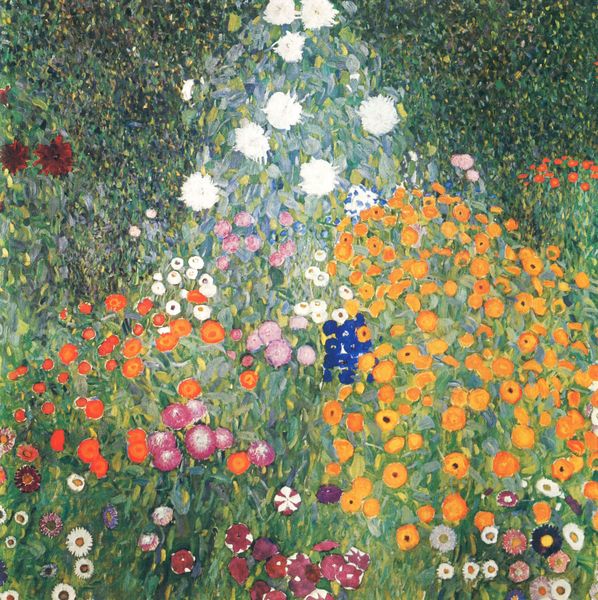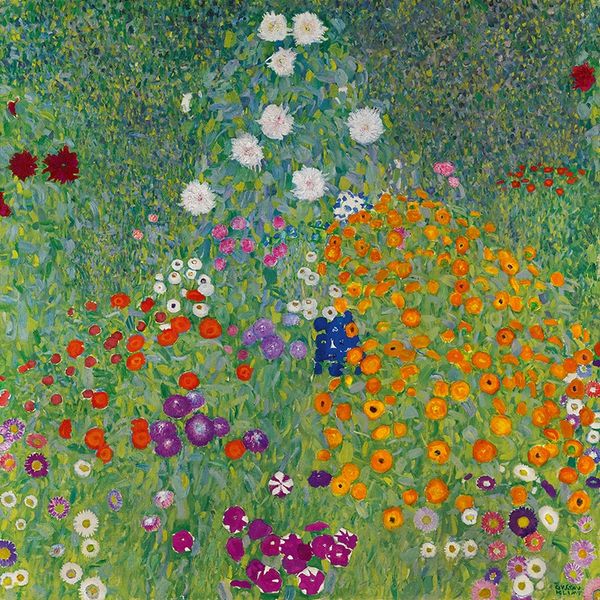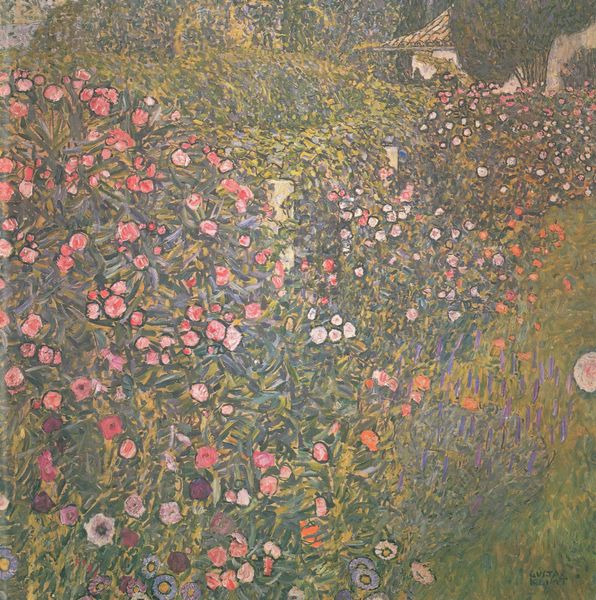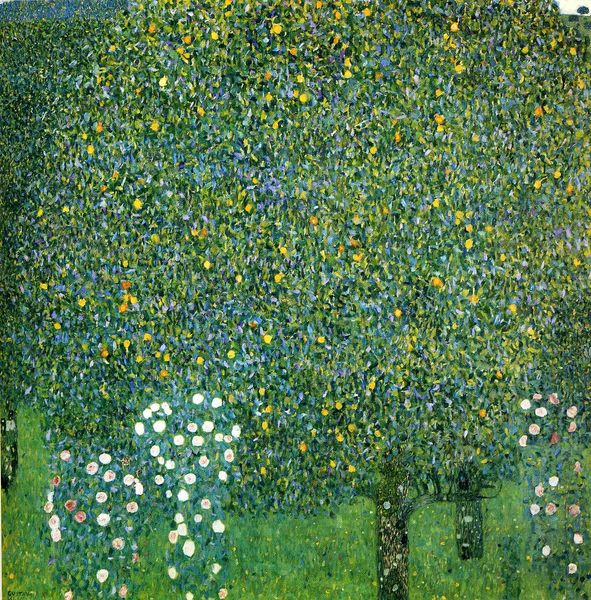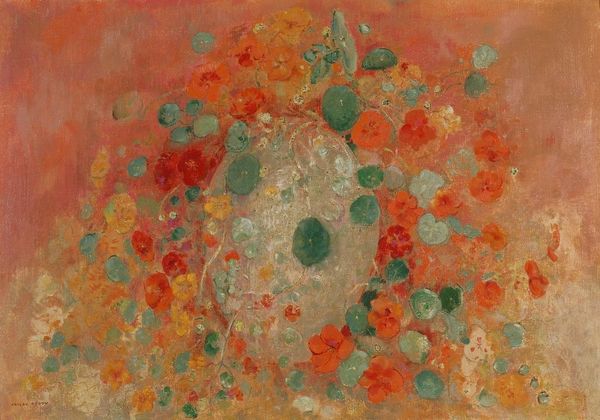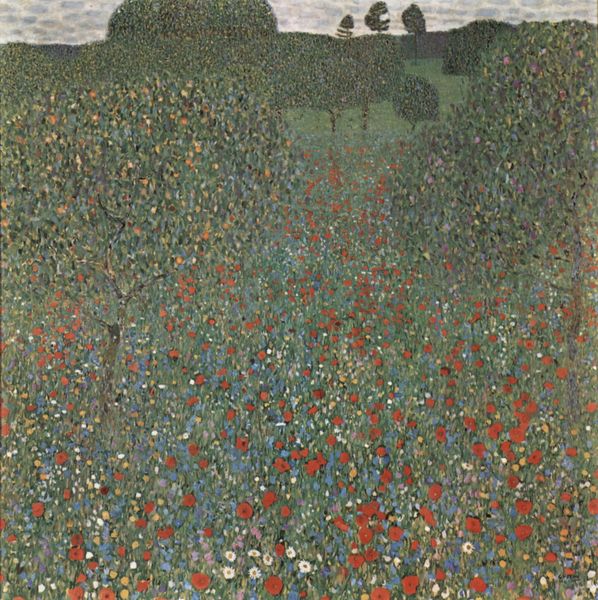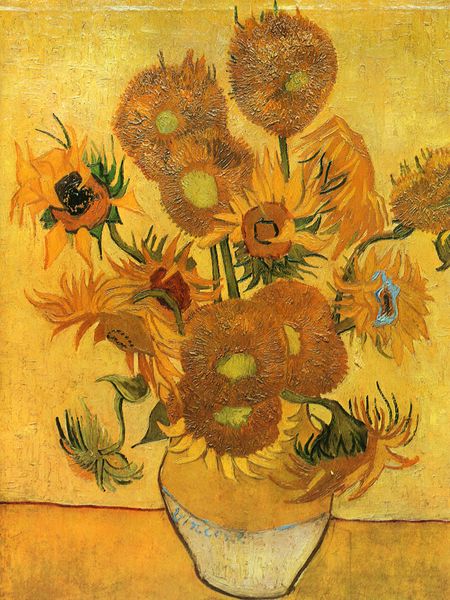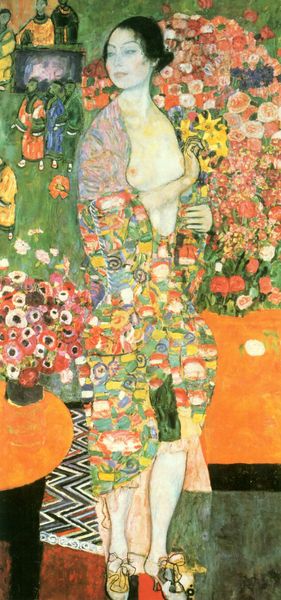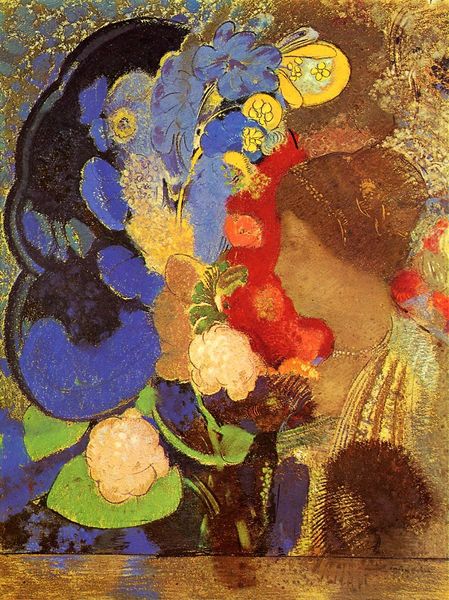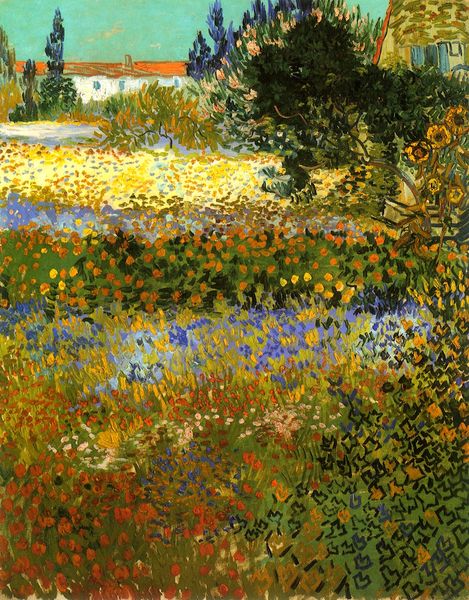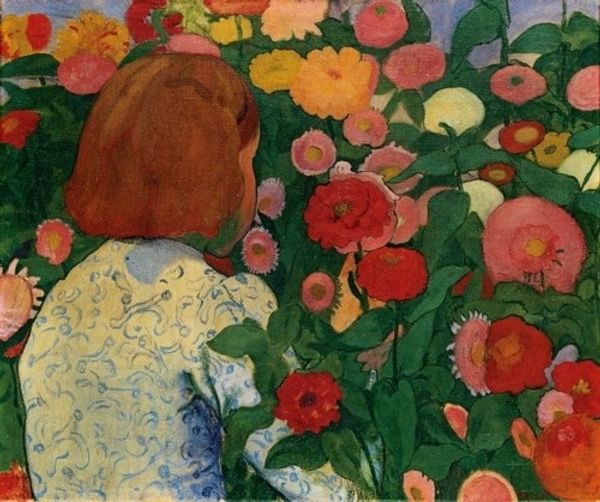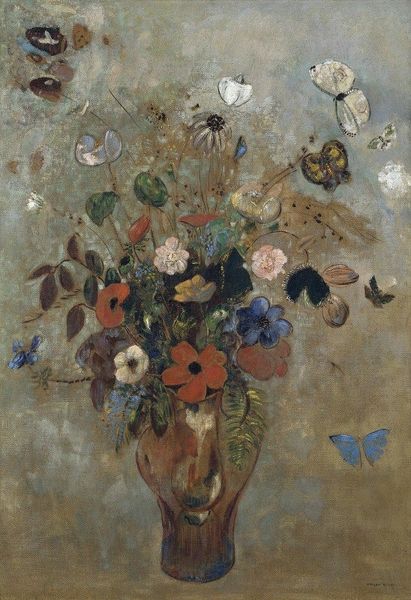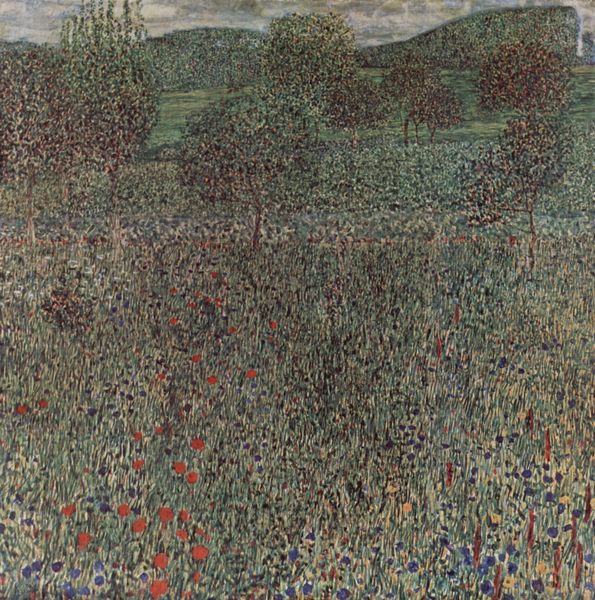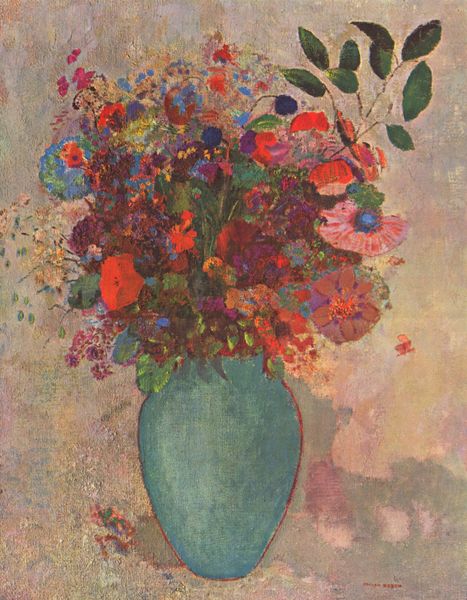
painting, oil-paint, impasto
#
organic
#
painting
#
oil-paint
#
landscape
#
flower
#
impasto
#
plant
#
symbolism
#
post-impressionism
Dimensions: 110 x 110 cm
Copyright: Public domain
Curator: Immediately, I'm struck by how this image hums with life; a vibrant, pulsing energy that feels both intimate and boundless. Editor: You're responding to Gustav Klimt's "Country Garden with Sunflowers," created in 1906. Painted during a time of increasing industrialization, Klimt, here, offers an almost defiant return to nature's embrace, one saturated with post-impressionistic symbolism. Curator: It is quite radical for its time. The density is intriguing. The lack of horizon almost erases any traditional understanding of landscape, creating instead this intensely flattened plane of floral abundance. The materiality of the impasto calls attention to the canvas. It looks less like a picture of a garden, more like a garden incarnate. Editor: The flattening aligns with Klimt’s exploration of surface design seen in his more well-known portraits. We see the subversion of depth; it resists the patriarchal gaze, perhaps mirroring the era’s burgeoning feminist movements advocating for women’s autonomy, reclaiming natural spaces and artistic representation. Curator: The brushstrokes almost resemble mosaic tesserae—individual marks building to an accumulative effect of shimmering texture. The overall composition emphasizes rhythm through the repetition of floral motifs, yet he subtly disrupts any rigid pattern with slight tonal variations. It's controlled, and ecstatic. Editor: Looking through a contemporary lens, Klimt's garden aesthetic resonates with critical ecology, celebrating the subversive potential of "weeds," and other indigenous flora, questioning Western aesthetic hierarchies by valorizing natural, uncultivated spaces in a bourgeois context. What appears purely decorative opens itself to layered interpretation about the organic and challenges traditional representation of women, body image, beauty and identity. Curator: Precisely. The density allows one to enter a subjective microcosm, a personal garden that refuses to yield itself easily, encouraging you to linger and discover more with each look. Editor: I think reflecting on the era’s push for self-expression is essential when observing the artwork—it's important to think about how cultural shifts shape aesthetics. Curator: Absolutely. Considering both structure and sociocultural nuance adds profound richness.
Comments
No comments
Be the first to comment and join the conversation on the ultimate creative platform.
